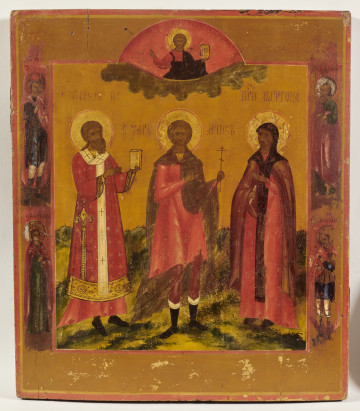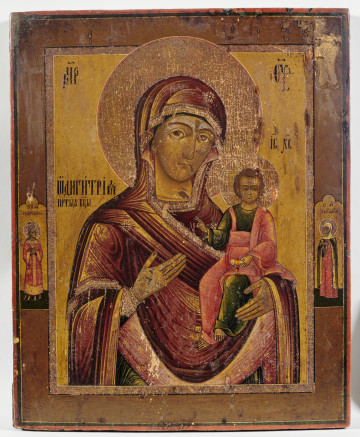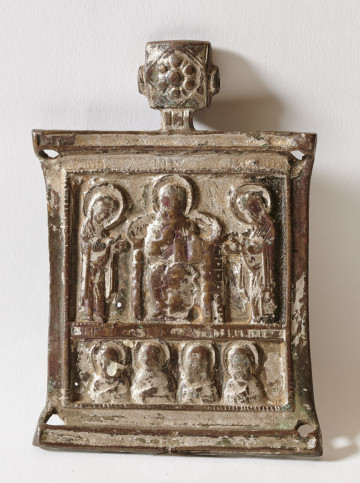
Council of Saints
koniec XIX w.
Castle Museum in Łańcut
Part of the collection: Historia miasta i regionu
Rańtuch is one of the typical elements of a woman’s outfit, which was in use until ca. 1920 – a linen head-and-shoulder covering in the form of a wide shawl, embroidered at the ends and over the forehead. When they went out of fashion, women donated them to Catholic and Orthodox churches to be used as altar cloths. The dimensions were as follows: 4 ells long – 24 centimetres, and about 80-90 centimetres wide. It was used as an accessory in a woman's outfit, put on after a chamełka and wrapping the head with a rąbek. Worn on the head or shoulders, it reached to the knees. White rańtuchs have been replaced by factory-made scarves. In Markowa, rańtuch was referred to as zowicie. The ends of the zowicie – in addition to woven red stripes – were covered with embroidery. The front of the piece was marked by a central strip of embroidery worn on the head, above the forehead, and the adorned ends thrown over the shoulders flowed down to the chest, reaching the knees. Rural embroiderers embroidered geometric patterns with red, brown and also white threads – the latter colour was worn during Lent. These pieces were worn by women in Markowa since mid-18th century. We also know about the use of the rańtuch in wedding rituals, where, after returning from church, the kitchen girl greeted the bride and groom, gave them bread, covered them with the rańtuch and led them to the table. Joanna Kluz Works cited: Ignas K., Ludowe stroje przeworskie – przeszłość i przyszłość, Przeworsk 2017.
Object type
History of the city and the region
Owner
Castle Museum in Łańcut
Identification number
Location / status

koniec XIX w.
Castle Museum in Łańcut

połowa XIX wieku
Castle Museum in Łańcut

XIX century
Castle Museum in Łańcut
DISCOVER this TOPIC
National Museum in Szczecin
DISCOVER this PATH
Educational path